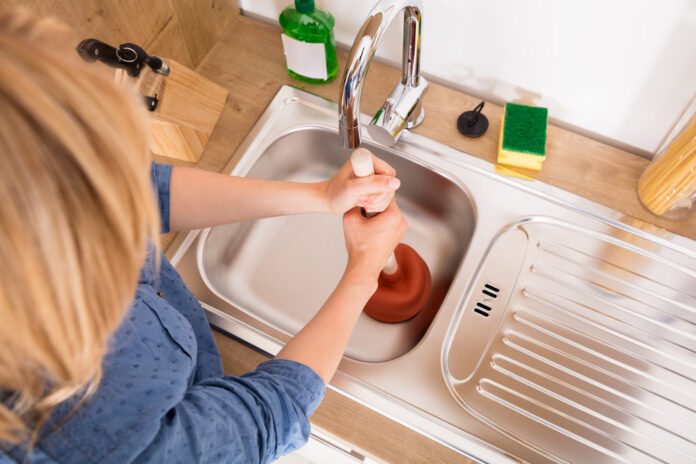Nothing obstructs your cooking much like a clogged kitchen sink. We all know the warning signs, but sometimes we neglect them due to which our kitchen sink won’t drain. However, fortunately, kitchen sink clogs are simple to fix. In this article, we have enlisted the seven quick and easy tips using which you can unclog your kitchen sink drain and make the most of your cooking time!
1. Try Boiling Water
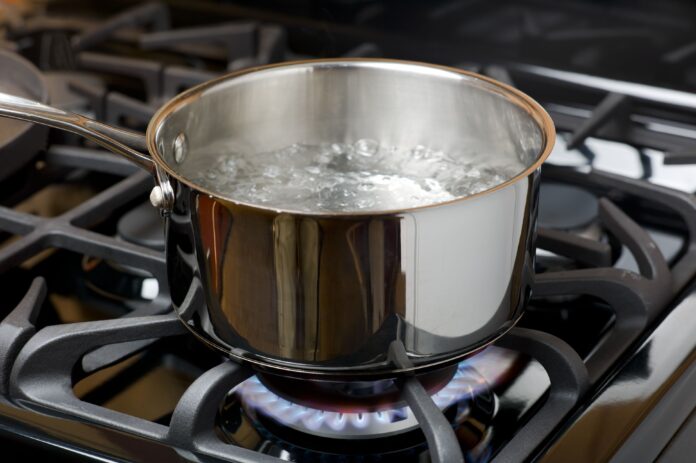
A blocked kitchen sink is an easy indication of a plumbing issue and can often be cleared by pouring down extremely hot water through it. However, this method usually works if your sink does not already have standing water in it.
To carry out the process, take a big saucepan on the stove and bring the water to a good boil. Pour water down the drain slowly to remove or break up the clog. Test the drain once, and repeat the method as needed.
2. Use The Natural Drain Cleaner
Take a measuring cup, add 1/3 cup of baking soda and vinegar each, and mix them well. The mixture will fizz instantly, and you must pour it down the clogged drain as soon as possible. The fizzing motion will aid in the removal of anything that has accumulated in the pipe. Allow it to sit for one hour at least, or overnight if possible. Post that, clean it with water.
3. Caustic Soda At Your Rescue
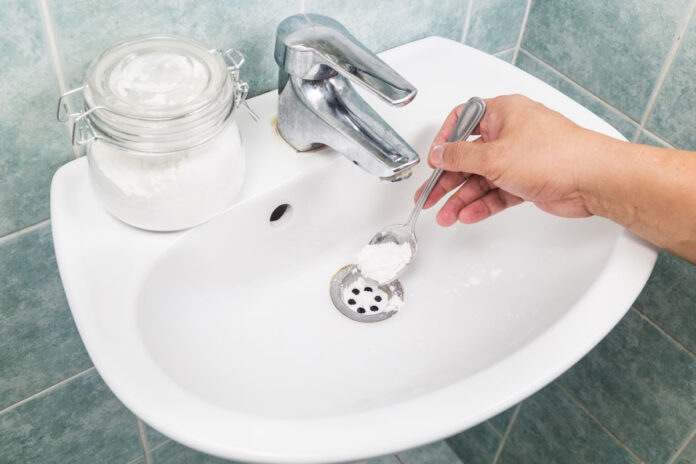
Pour 3/4 gallon of water into a bucket, followed by 3 cups of caustic soda. With a wooden spoon, thoroughly combine the ingredients. It will start to bubble and heat up. Pour it into the clogged drain and allow it for 20-30 minutes before cleaning it with hot water. If required, repeat the process. However, before using caustic soda, put on rubber gloves and eye protection since caustic soda can produce painful chemical burns.
4. Make Use Of A Plunger
Place the plunging cup well over the clogged drain and press firmly. If the sink does not have standing water, add water to cover the plunger cup. Drain the sink and maintain the seal by making six even up-and-down thrusts. Take out the plunger if the water drains freely, and the obstruction has been removed. If not, repeat the procedure.
5. Snake In Your Drain
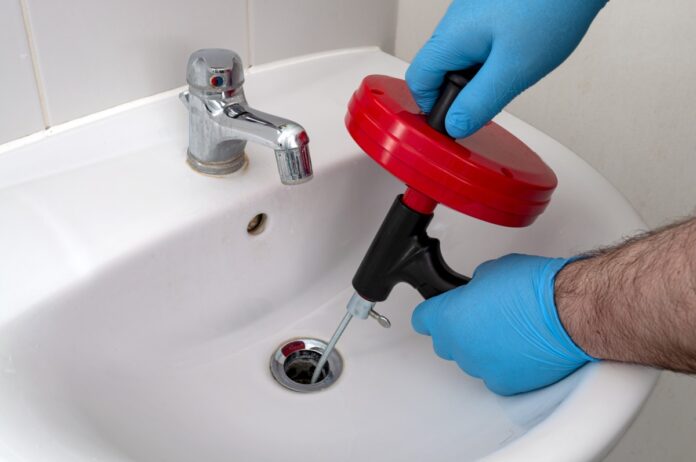
Drain Snake is a simple piece of technology, yet it does wonders. Basically, it is a long, flexible metal rope with a metallic spiral at one end. Plumber snakes come in manual and electric varieties and are available in two various materials, ranging from inexpensive plastic to sturdy stainless steel.
6. Look Out For Dry & Wet Vacuum
A wet and dry vacuum can be an excellent tool for clearing drains if you have one. To begin with, turn it to vacuum liquids and cover the vent to avoid any mess.Then, cover the drain with the tightest seal you can manage, an old plunger head, for instance. The vacuum can be strong enough to pull the obstruction up the pipe and into the vacuum bag when you set it to its highest level.
7. Call For Professional Help
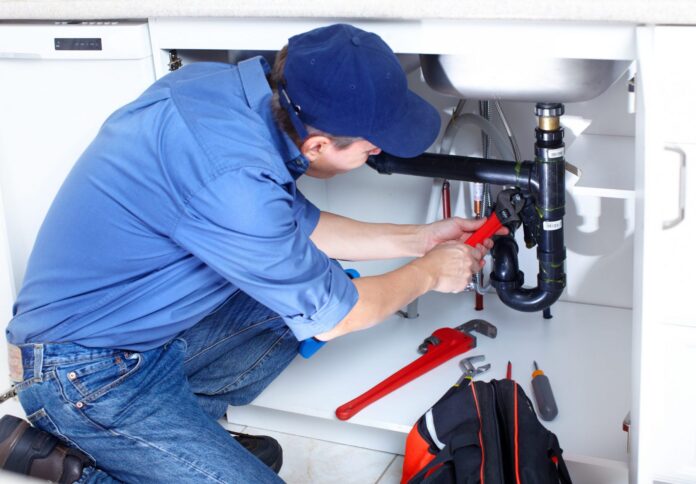
If none of the above-mentioned ways work for you, it’s time to call a plumber! Sometimes it gets difficult to find out the problem and DIYing the repair. So, it is always recommended to opt for professional’s help.
Talking about the professionals, you can even consider investing in a home warranty plan. It will cover all your major kitchen appliance repair and replacement costs. Girish Mavatkar, Chief of Growth at HomeWarrantyReviews says “A home warranty plan can be a time and money saver for homeowners out there!”
Quick Prevention Methods
Now that you have read about the seven effective tips to clean your kitchen sink drain, you must also learn about preventing the clog. Here’s how it goes:
If you don’t have a skin without disposal:
- If you have a sink with a disposal, never pour oil or grease down the drain in your sink. You can pour grease into a sealed container and discard that container. Grease may stick to your pipes leading to a clogged kitchen sink.
- Avoid putting food scraps down the drain if you don’t have a garbage disposal. To keep food out of your kitchen sink, use a drain strainer.
- Once a week, pour a kettle of hot water down the drain of your kitchen sink to melt any fat or grease that may have accumulated inside your pipes. Pour the water carefully and gently to prevent splashing.
If you have a skin without disposal:
- Don’t put specific food items in your waste disposal. Eggshells, coffee grounds, banana peels, and potato skins are among the most prevalent irritants. These foods don’t grind properly in garbage disposals because they are thick and/or sticky.
- To avoid buildup and maintain functionality, it’s a good idea to regularly clear the drain in your kitchen sink. Moreover, regular cleaning of the house is also necessary. We advise you to use the best methods to clean your home and kitchen effectively.
- Always keep a continuous stream of cold water running from the faucet when operating the garbage disposal. Waste material will be completely transported through the drainage system by the water flow.
Final Words
Clogged drains are a part of our lives, but we must know the ways of getting rid of them. Use our seven easy tips and clean those stubborn blockages from your kitchen sink! However, it’s crucial to promptly attend to a blocked kitchen sink or a slow drain. Without the proper knowledge and tools, removing a persistent blockage can be challenging. Call a licensed plumber if you are having difficulties keeping your kitchen drain free.
Clogs that happen frequently or consistently may sometimes be an indication that more serious plumbing issues are brewing deep inside your system. It might be time to think about having your plumbing system evaluated by a qualified professional. They can swiftly find blockages, leaks, and damage inside your home’s pipes or sewage lines using a camera and suggest the best fixes.

